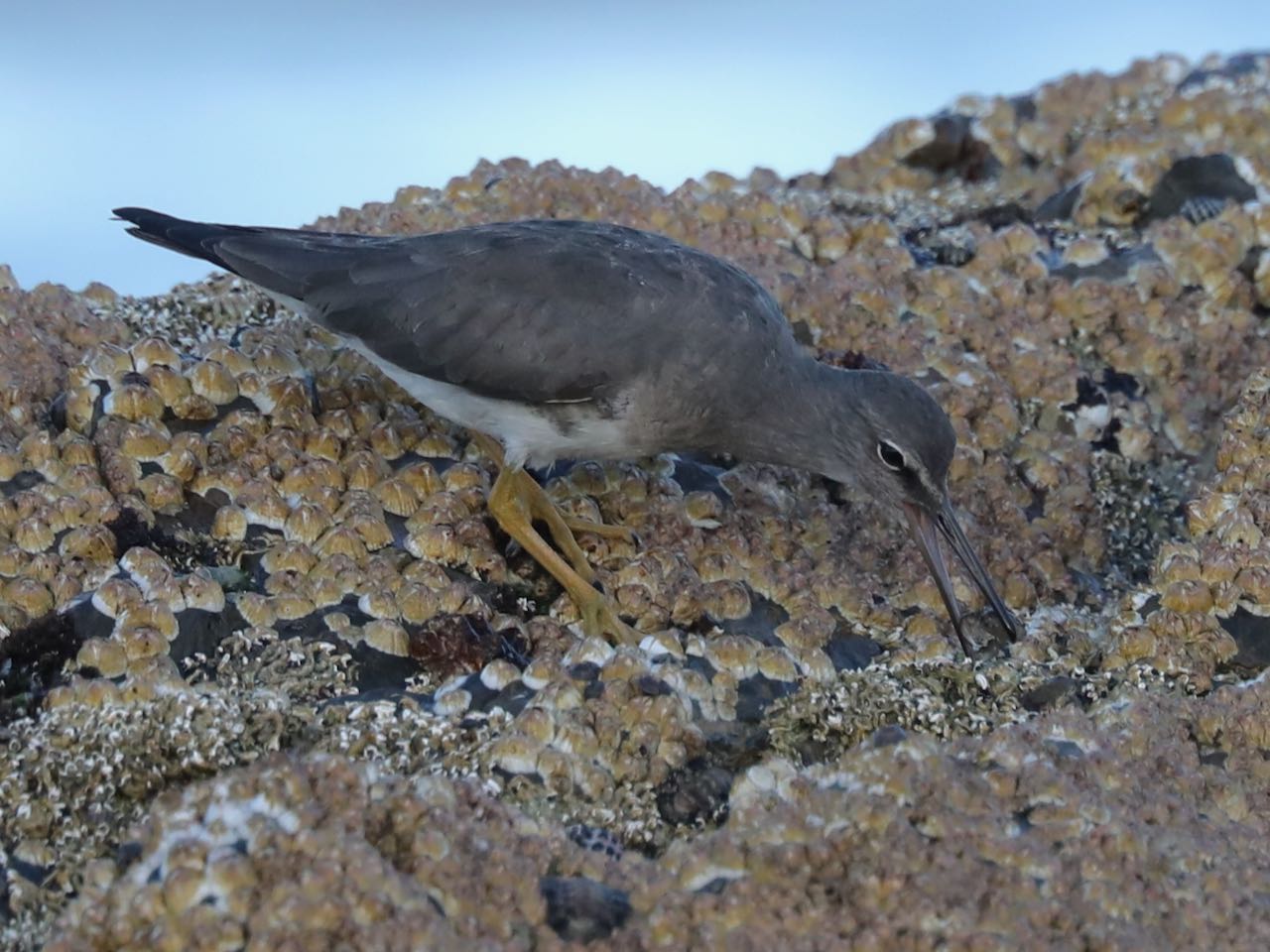Wandering Tattlers (Tringa incana) are an uncommon migrant shorebird in Australia where they are found on rocky shores and coral cay islands from Cape York south along the east coast to just below Sydney. Wandering Tattlers breed by mountain streams in Alaska and far east Siberia and most migrate to southern North America, Central America and northern South America.
The following screen shot from Birdata shows the Wandering Tattler’s Australian range.
The eBird database shows two records for Wandering Tattler in far East Gippsland and a few south of Sydney to Jervis Bay – see screen shot below. Sightings of Wandering Tattlers in Victoria seem to generate a lot of excitement for Victorian twitchers with a high level of evidence required to confirm a sighting this far south.
Identifying Wandering Tattlers is a challenge because they are very similar to the closely related Grey-tailed Tattler (Tringa brevipes) (1), a migrant which breeds along stony riverbeds in the mountains of north-east Siberia. Grey-tails are far more common and widespread in Australia where they mostly frequent tidal flats – Wandering Tattlers are rarely found on tidal mud and sand flats.
Recently I had just completed a 2Ha 20 minute Birdata survey on the rocky coast of the Brunswick Heads Nature Reserve in NSW when I flushed a grey shorebird which I had not seen even though it was within the 2 Ha area I had been observing for 20 minutes. The bird flew a short distance to a rocky perch where I determined with my bins that it was a Tattler. The bird then flew closer and resumed foraging on the low-tide exposed rocks – there was a lot of exposed habitat and potential food items available. I soon realised this bird was the much less common Wandering Tattler which obviously was over wintering in Australia. For the next 30 minutes or so I observed and photographed the bird as it very actively moved about the rocks probing with its bill among the abundant molluscs.
Please click on photos to enlarge.
This was the only time I saw the bird in water – it seemed to avoid the waves as they crashed onto the rocks.
The bird mostly foraged on the seaward side of the rocks so I saw it intermittently when it came onto the shoreward side.
The bird was very agile and sure footed even on quite steep surfaces.
The bird moved rapidly but stopped often to probe among the molluscs for food items.
The above photo heavily cropped shows the bird is prising a marine worm from the rock.
Given the Wandering Tattler is uncommon in Australia and it was winter when most of its kin would be breeding in far eastern Siberia and Alaska I was very lucky to find this bird at Brunswick Heads.
(1) Photos of the Grey-tailed Tattler can be found in this Avithera post here:
http://avithera.blogspot.com/2019/01/grey-tailed-tattler.html












No comments:
Post a Comment